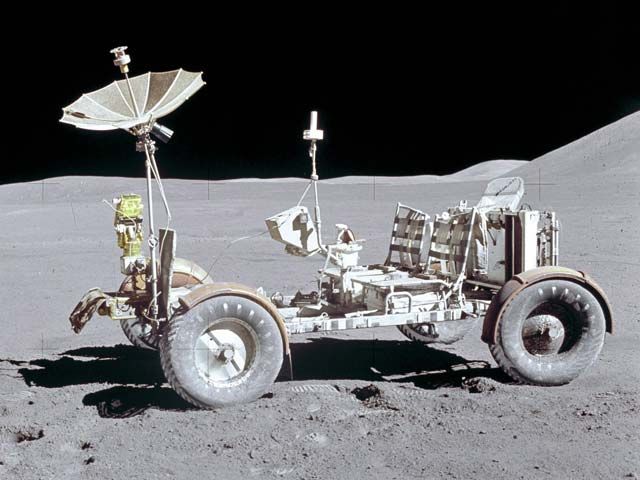
NASA is happy to say it has reinvented the wheel.
A new technology called a "spring tire" can cushion rovers as they traverse rocky or otherwise inhospitable landscapes. The tires are covered in damage-resistant mesh to help the wheels get a good grip. The alloy NASA used, nickel titanium, also has a "memory"–an ingenious solution to the Achilles' heel of earlier spring tires, which remained dented after rolling over a particularly sharp rock. When tested on simulated Martian terrain at NASA's Jet Propulsion Laboratory, the new tires quite literally bounced back.
NASA has been in constant pursuit of a better tire design for decades. In 2009, the NASA Glenn Research Center in Cleveland first started working with Goodyear to design a 'Superelastic Tire' for Martian terrain. The invention of the new spring tire was borne from a chance hallway encounter between engineer Colin Creager and materials scientist Santo Padula.
"As soon as I walked in, I saw the tires, and I looked at [Creager] and I said, 'aren't you having a problem with plastic deformation in this?'" Padula said in a NASA video while sitting next to Creager. "And he smiled, like he is right now, and he said, 'Yeah.' And I said, 'I have your solution.'"
Creager had never heard of shape memory alloys, and the two began collaborating on what would become the mesh "chainmail."
High-performing compliant tires have three main benefits. They can allow rovers to explore territory that previously would have been too inhospitable. They conform to the terrain like memory foam and don't sink into the ground compared to rigid wheels, so they can bear heavier cargo. And they absorb more energy from impact, meaning they could be used for future crewed vehicles that would be designed to move faster.
"We wanted to see if a structure could do something beyond being a static piece of material," Raul Polit Casillas, a systems engineer at JPL who worked on the fabric, told Wired earlier this year.

The Curiosity Rover has suffered a lot of wheel damage since beginning its mission in 2012. And, obviously, you can't get new tires on Mars. As The Register reported, Curiosity's route was altered in 2014 to try to make things easier, and earlier this year a software update helped it get better traction by adapting wheel speed to terrain as it rolls along. NASA hasn't yet specified what the new spring tires will be used for.
Uncommon Knowledge
Newsweek is committed to challenging conventional wisdom and finding connections in the search for common ground.
Newsweek is committed to challenging conventional wisdom and finding connections in the search for common ground.
About the writer
Kastalia Medrano is a Manhattan-based journalist whose writing has appeared at outlets like Pacific Standard, VICE, National Geographic, the Paris Review Daily, ... Read more
To read how Newsweek uses AI as a newsroom tool, Click here.








